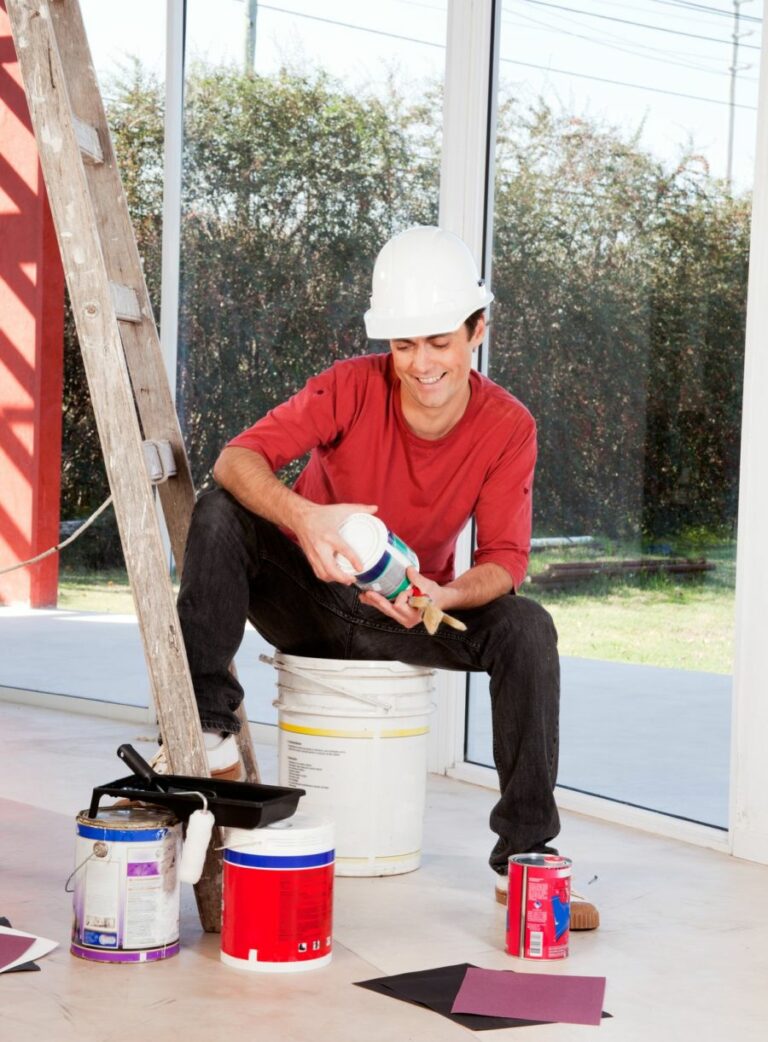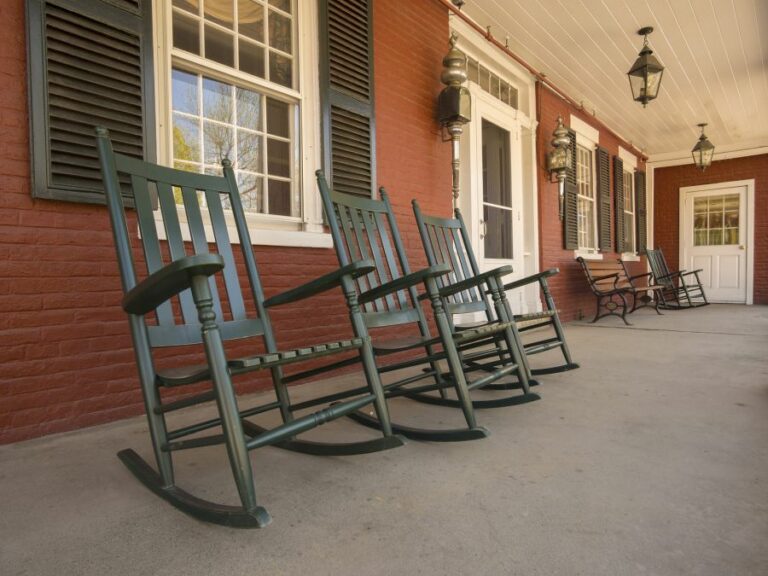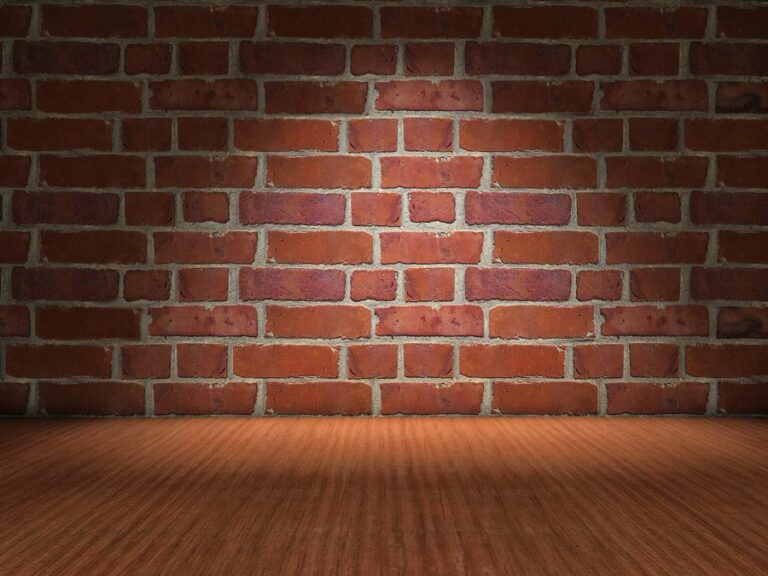How Long Does Outdoor Paint Take To Dry, What Pros Say
Are you tired of waiting for your outdoor paint to dry, unsure when it’s safe to touch or apply a second coat? Let’s demystify the drying process and explore humidity, temperature, paint composition, and application methods.
How long does outdoor paint take to dry:
Outdoor paint drying times depend on climate, surface, paint type, and color. Oil-based paint typically dries in 6-8 hours but takes 24 hours to cure fully, while water-based paint dries in 1-2 hours. Temperature, humidity, and surface type also affect drying time. For optimal results, paint on a dry day, prep the surface, apply primer, use the right brush and roller, and take drying time into account.

Discover the factors influencing drying time, varying paint types, and ideal conditions for optimal drying. Learn practical tips and tricks to ensure a successfully dried painted surface, reducing potential issues and enhancing your outdoor painting experience.
Contents
- 1 Duration of Drying Time for Exterior Paint Applications
- 2 What is the required drying time for exterior paint before?
- 3 What Occurs When Precipitation Occurs Following a Fresh Coat of Paint?
- 4 What is the recommended drying duration for outdoor paint before it is exposed to rain?
- 5 Is it Possible for Paint to Dry Overnight When Left Outdoors?
- 6 What is the duration required for latex paint to dry when applied outdoors?
Duration of Drying Time for Exterior Paint Applications
Understanding these elements is crucial in determining how long it will take for your paint to dry and achieving optimal results when embarking on an outdoor paint project.
• Types of Outdoor Paint and Their Drying Times
There are primarily two types of outdoor paint: oil-based and water-based (acrylic, latex) paint. These types have distinct differences in drying time, application processes, and longevity. Before selecting the right paint for your project, it’s essential to understand the nuances between these two types of paint.
– Oil-Based Paint
Oil-based paint is known for its durability and ease of application, making it a popular choice for outdoor paint jobs. However, oil-based paint can take longer to dry than other paint types. In general, oil-based paint will dry to the touch within 6-8 hours but may take up to 24 hours to cure fully.
– Water-Based Paint (Acrylic, Latex)
Water-based paint, including acrylic and latex paints, is faster drying than oil-based paint. On average, these paints will dry to the touch in just 1-2 hours.
Complete curing generally takes about 30 days, but to be on the safe side, I recommend waiting 4-6 hours before applying a second coat or moving objects back into place.
• Factors Affecting Outdoor Paint Drying Time
– Temperature
The climate plays a significant role in determining how quickly outdoor paint will dry. In general, paint dries slower in colder temperatures and faster in warmer temperatures. It’s recommended to paint when the temperature is between 50-90F (10-32C) for optimal results.
– Humidity
High humidity will slow down the drying process, while low humidity will speed it up. Ideally, it would be best if you painted on a day with moderate humidity (around 40-70%) to dry evenly and within a reasonable timeframe.
– Surface Type
The material being painted can also affect the drying time. For instance, painting on porous surfaces, like wood, will generally require a longer drying time due to the paint seeping into the surface. The paint will dry more quickly on nonporous surfaces, such as metal or vinyl siding.
– Paint Color and Thickness
Darker colors, especially in oil-based paint, may contain more pigments, leading to longer drying times. Additionally, applying thicker layers of paint can extend the drying time.
• Tips for Successful Outdoor Paint Drying
1. Paint on a Dry Day
For best results, paint on a dry day when the weather is not too hot, cold, or humid. Check the weather forecast and plan your project accordingly.
2. Prep the Surface
Proper surface preparation is crucial for the success and longevity of your paint job. Clean the surface to remove dirt, dust, and mildew to ensure that the paint adheres properly.
3. Apply Primer
Using a high-quality primer can aid in achieving a more even and durable finish. Primers help the paint adhere better to the surface, reducing the risk of peeling or blistering.
4. Use the Right Brush and Roller
Select the appropriate brush and roller for the task at hand. This will help you achieve an even and uniform layer of paint, reducing the likelihood of thick spots that take longer to dry.
5. Take Drying Time into Account
Account for your paint’s drying time when planning your project. You can avoid potential issues like dripping or peeling paint by giving it enough time to dry and cure properly.
• In Conclusion
Knowing how long outdoor paint takes to dry is essential for the success of your painting project. In general, oil-based paint takes longer to dry than water-based paint, with numerous factors affecting drying time, such as temperature, humidity, surface type, and paint color.
By taking these factors into consideration and following the tips outlined above, you can achieve optimal results for your outdoor paint job that not only looks great but lasts for years to come.
Type of Outdoor Paint | Estimated Drying Time |
|---|---|
Latex Paint | 1 – 2 hours |
Oil-Based Paint | 4 – 8 hours |
Primer | 30 minutes – 1 hour |
Spray Paint | 10 – 30 minutes |
What is the required drying time for exterior paint before?
Painting the exterior of your house can be an expensive and time-consuming project. However, it can also be incredibly rewarding, as it enhances the look and increases the value of your property.
One critical factor to take into account when embarking on this project is the length of time it takes for the paint to dry fully, which can vary depending on the type of paint, the environmental conditions, and the surface you are painting.
• Factors Affecting Drying Time
When it comes to estimating how long exterior paint needs to dry, numerous factors come into play. The main components include the type of paint, the weather conditions, and the surface being painted.
– Type of Paint
There are two primary types of exterior paint: water-based (latex) and oil-based (alkyd). The drying time varies for each type.
Water-Based (Latex) Paint
Latex paint is popular because it dries relatively quickly compared to oil-based paint. Latex paint can generally be dry to the touch within 1-2 hours and fully cured within a couple of weeks.
Oil-Based (Alkyd) Paint
Oil-based paint takes longer to dry, typically becoming touch-dry within 6-8 hours. Complete curing of oil-based paint can take up to a month.
– Weather Conditions
The weather plays a significant role in the drying time of exterior paint. Temperature, humidity, and wind are all factors to consider when planning your painting project.
Temperature
Ideal temperatures for painting are between 50F and 85F. Too cold, and the paint may not adhere properly or have trouble drying. Too hot, and the paint may dry too quickly, leading to uneven coverage or cracking.
Humidity
High humidity can prolong the drying time of paint, as the moisture in the air prevents the paint from drying completely. Aim to paint on days when the relative humidity is between 40% and 70%.
Wind
Moderate wind can help paint dry faster by increasing evaporation. However, strong winds may cause debris and dust to stick to the wet paint, compromising the appearance of the finish.
– Surface Being Painted
The type of surface you are painting will also affect drying time.
Porous Surfaces
Porous surfaces, such as wood or stucco, will absorb more moisture from the paint, increasing drying time. You might also need to apply additional coats to achieve proper coverage.
Non-Porous Surfaces
Non-porous surfaces, like metal or vinyl siding, allow for quicker drying because they do not absorb moisture from the paint.
• Expert Tips for a Successful Paint Job
To ensure a smooth and successful painting project, follow these expert tips:
– Choose the Right Paint
Select a high-quality exterior paint suitable for your specific surface. Quality paint will adhere better, dry faster, and provide a more durable finish.
– Properly Prepare the Surface
Ensure that the surface to be painted is clean, dry, and free of loose or peeling paint. If necessary, sand, prime, and repair any damaged areas before applying the new paint.
– Check the Weather
Plan your painting project around optimal weather conditions, avoiding extreme temperatures, high humidity, or strong winds that can impact the drying time and quality of the paint job.
– Allow Proper Drying Time Between Coats
Due to the lengthier drying time for exterior paint, patience is essential. Waiting for each coat to dry sufficiently before applying the next coat ensures a smoother finish and a more durable paint job.
– Monitor the Paint’s Drying Progress
Though the average drying times can provide a guideline, it’s crucial to monitor the progress of your paint. Different factors can impact drying, and it’s essential to ensure it’s sufficiently dried before moving on to the next step.
• In Conclusion
In order to achieve a successful exterior paint job, it is essential to consider the factors that impact drying time, such as the type of paint, environmental conditions, and the surface you are painting.
By taking the time to understand these factors and follow expert tips, you will be well-equipped to complete your exterior paint project with impressive results.
Condition | Drying Time |
|---|---|
Touch dry | 1 – 2 hours |
Apply a second coat | 4 – 6 hours |
Accept light foot traffic | 24 hours |
Fully cure | 4 – 7 days |
What Occurs When Precipitation Occurs Following a Fresh Coat of Paint?
• The Importance of Paying Attention to the Weather
Planning a painting project involves many considerations, such as the size of the project, the type of paint to use, and the timeline for completion. One aspect that is often overlooked, however, is the weather.
It is crucial to take note of the weather before starting any painting project, as it affects the results, especially if it rains after you paint.
• The Impact of Rain on Freshly Painted Surfaces
When rain falls on freshly painted surfaces, it can lead to various issues that affect the appearance and lifespan of the paint job. The following are some problems that may arise:
– Waterlogged Paint
If rainwater comes into contact with wet paint, it can cause the paint to become waterlogged. This dilutes the paint, making it less adhesive to the surface being painted. As a result, the paint may not fully adhere once it dries, leading to peeling or blistering in the future.
– Running and Dripping
Rain can cause wet paint to lose its viscosity and consistency, leading it to run or drip down the surface. This results in unsightly streaks and uneven coverage, which may require additional coats of paint or even stripping and repainting the affected area.
– Longer Drying Time
The high humidity levels that accompany rain can significantly increase the time it takes for your paint to dry. This can delay your painting project and leave the affected areas susceptible to damage until the paint fully dries.
– Appearance Issues
Rain on a freshly painted surface can cause the paint to lose its sheen and may leave behind water spots or stains. This can detract from the overall look of your paint job and may make the paint appear less attractive or professional.
– Mold and Mildew Growth
If rainwater gets trapped under the paint film or enters through small gaps, it can grow mold and mildew in and around your painted surfaces. Over time, these growths can weaken the paint film and cause it to peel or fail prematurely.
• How to Prevent Rain-Related Issues in Your Painting Project
To ensure the success of your painting project and prevent rain-related issues, follow these recommendations:
1. Always Check the Weather Forecast
Before beginning your painting project, always consult the weather forecast for the day and the following days. Be sure to schedule painting on days when the chances of rain are low, and there is sufficient time for the paint to dry.
2. Choose the Right Paint
I recommend using water-resistant or waterproof paint in areas prone to moisture or heavy rainfall. These types of paint are designed to withstand rain and moisture better, ensuring a longer-lasting and more durable paint job.
3. Apply Paint in the Correct Conditions
Proper application conditions are essential for successful paint adherence. The temperature should ideally be between 50-90 degrees Fahrenheit, and relative humidity should be below 85%. Avoid painting during extremely hot or cold temperatures, as this can lead to poor paint performance.
4. Provide Adequate Surface Protection
Use tarps or plastic sheeting to cover areas not being painted to protect them from rain during the project. Additionally, if rain is inevitable, consider using scaffolding with built-in protection to shield your painting project from the elements.
5. Allow for Adequate Drying Time
The drying time for paint can vary depending on its type, thickness, and weather conditions. Generally, the paint takes at least 24 hours to dry fully. However, I recommend allowing additional drying time in humid conditions or after prolonged periods of rain.
• What to Do If It Rains after You Paint
If rain does occur shortly after painting, take the following steps to address the situation and minimize any potential damage:
- Assess the damage: Once the rain has stopped, carefully inspect your painted surfaces to determine the extent of the damage. Look for signs of running, dripping, or waterlogged paint.
- Dry the surface: If possible, use a clean, dry cloth to blot any standing water off the painted surface gently. Do not rub or apply pressure, as this may damage the still-wet paint.
- Allow time for the paint to dry: If it is still wet, allow it to dry independently. Do not attempt to speed up the drying process using heat or fans, as this may cause further damage.
- Repair any damages: If the rain has caused significant running or dripping, lightly sand and repaint the affected areas once the surface has fully dried.
- Monitor for any long-term issues: Keep an eye on your painted surfaces for any signs of mold or mildew growth, peeling, or blistering. Address any issues as they arise to maintain the integrity and appearance of your paint job.
In conclusion, proper planning and preparation are essential when painting to prevent issues related to rain. Following the recommendations in this article, you can ensure a long-lasting and attractive paint job despite any unforeseen weather challenges.
Condition | Result |
|---|---|
Light rain after paint dries | No significant damage, may cause a subtle texture on the painted surface |
Heavy rain after paint dries | May cause noticeable water spots and uneven texture, may require touch-ups |
Rain before the paint dries | May wash away the paint, cause streaks or runs, leading to repainting |
Humidity during painting | May affect the paint’s drying time and adhesion to the surface, may require longer drying time between coats |
What is the recommended drying duration for outdoor paint before it is exposed to rain?
Rain can be a major concern when it comes to outdoor painting projects. If you’re planning on painting the exterior of your home, a fence, or another outdoor surface, you need to be aware of the potential impact of rainfall on your fresh paint job.
• The Importance of Proper Drying Time
Allowing enough drying time is crucial for the longevity and appearance of your paint job. If rainwater comes in contact with wet paint, it can cause a variety of problems, such as:
- Dilution of the paint, leading to a lighter or uneven color
- Compromised adhesion, causing the paint to peel or flake prematurely
- Water streaks and spots on the painted surface
- Potential mold and mildew growth under the paint
To avoid these issues and ensure a professional-looking result, giving your paint enough time to dry before exposing it to rain is essential.
• Ideal Drying Conditions
Typically, it’s recommended to paint when the weather is dry, with a relative humidity of around 40-70%. Lower humidity levels speed up the drying process, while higher levels may slow it down. Temperature also plays a role in paint drying time, with the ideal range being between 50-90°F (10-32°C).
When planning your outdoor painting project, it’s important to consider the weather forecast for the coming days. Look for a window of at least 24-48 hours of dry, mild conditions to allow the paint to dry properly.
• Recommended Drying Times for Different Types of Paint
Drying times can vary depending on the type of paint you’re using and factors such as humidity and temperature. Here are some general guidelines for a few common types of outdoor paint:
– Water-Based (Latex) Paint
Water-based, or latex, paint is a popular choice for outdoor painting because it dries quickly and is easy to clean up. In ideal conditions, latex paint can be dry to the touch within 1-2 hours and ready for a second coat within 4 hours.
However, it’s recommended to allow a minimum of four to six hours of drying time before rain exposure. Keep in mind that higher humidity levels and colder temperatures may increase the necessary drying time.
– Oil-Based (Alkyd) Paint
Oil-based, or alkyd, paint is another option for outdoor projects, as it offers excellent durability, adhesion, and resistance to the elements.
However, oil-based paint typically takes longer to dry than latex paint. Under optimal conditions, it can take 8-24 hours for oil-based paint to become dry to the touch and 24-48 hours for it to be fully cured.
Therefore, it’s crucial to allow a minimum of 24 hours of drying time before rain exposure when using oil-based paint. Be prepared to postpone your project if the weather forecast predicts rain within that timeframe.
– Exterior Wood Stain
Exterior wood stains are often used for projects like decks, fences, and wooden outdoor furniture. Stain drying times can vary significantly depending on the specific product and application method used.
In general, it’s safest to allow at least 24 hours of drying time for exterior wood stains before exposing them to rain.
• Useful Tips to Protect Your Paint Job From Rain
If rain is unavoidable, here are some helpful tips to protect your paint job:
- Cover the painted surface: If possible, use a waterproof tarp or plastic sheeting to cover the freshly painted surface, securing it with bungee cords or weights to keep it in place.
- Paint early in the day: Painting early in the day allows for more drying time before nighttime dew or potential rain.
- Avoid heavy application: Apply thin, even coats of paint, as these will dry faster than thick, heavy coats.
- Choose quick-drying paint: If you’re concerned about impending rain, opt for fast-drying paint specifically formulated for outdoor use.
• Conclusion
Proper drying time is essential to ensure a successful, long-lasting outdoor paint job. Before exposing the surface to rain, a minimum drying time of 4-6 hours for latex paint, 24 hours for oil-based paint, and 24 hours for exterior wood stains is recommended.
Take into account the weather forecast, humidity levels, and temperature when planning your project, and be ready to reschedule if necessary. By allowing enough time for your paint to dry and taking steps to protect your work, you’ll be rewarded with a beautiful, durable finish that lasts for years to come.
Paint Type | Drying Time Before Rain |
|---|---|
Acrylic/Latex | At least 4 hours |
Oil-Based | At least 24 hours |
Is it Possible for Paint to Dry Overnight When Left Outdoors?
Painting outside can be a satisfying and productive activity. However, one of the main concerns is whether the paint will dry overnight outside.
• Types of Paints and Their Drying Times
The drying time of paint varies depending on the type of paint used. Here are some common types of paints and their approximate drying times:
– Water-Based Paints:
- Acrylics: Acrylic paints dry relatively quickly, usually within 1-3 hours for thin coats and up to 24 hours for thicker coats.
- Latex: Latex paints also dry relatively quickly, within 1-4 hours for a thin coat and up to 24 hours for thicker coats.
– Oil-Based Paints:
- Oil-based paints: These paints take longer to dry than water-based paints, usually taking 24-48 hours for thin coats and up to several days for thicker coats.
Note: The above-mentioned drying times are for indoor conditions. Variables such as temperature, humidity, and air circulation can affect the drying time when painting outside.
• Factors Affecting Paint Drying Time
Several factors can affect the paint drying time, especially when painting outside. Some of these factors are:
- Weather and temperature: One of the primary factors affecting paint drying time is the weather and temperature. Warmer temperatures can help paint dry faster, while colder temperatures can slow down the drying process. When painting outside, monitoring the weather and choosing a day with ideal temperature conditions for your paint type is crucial.
- Humidity: High humidity levels can also slow down the drying process of paint. If the air is moist, it can take longer for the paint to evaporate, resulting in longer drying times. It is best to paint outside on days with lower humidity levels for faster drying times.
- Air circulation: Adequate air circulation is essential for paint to dry properly. When painting outside, be sure there is enough open space for air to circulate and help the paint dry.
- Paint thickness: The thicker the layer of paint, the longer it can take to dry. Apply thin, even coats for quicker drying times.
- Type and color of paint: As mentioned earlier, different types of paint can have varying drying times. Additionally, darker colors may require more time to dry as they contain more pigments.
• Tips for Ensuring Proper Paint Drying Outside
Here are some recommendations to ensure your paint dries overnight outside:
- Check the weather forecast: Always check the weather forecast for the days you plan to paint outside. Look for days with warmer temperatures, lower humidity levels, and no rain predicted.
- Start early in the day: Painting earlier in the day allows more time for the paint to dry before nighttime temperature drops and humidity levels rise.
- Apply thin coats: Thinner coats of paint will dry faster than thicker coats. Use a proper brush or roller to apply thin, even coats.
- Choose the right paint: Use paint that is specifically formulated for outdoor use and has a quicker drying time if possible.
- Allow proper curing time between coats: Ensure each coat has adequately dried before applying another. This can improve the overall paint adhesion and appearance.
- Use a fan or blower to increase air circulation: If the area you are painting has limited air circulation, consider using a fan or blower to help circulate the air and speed up the drying process.
- Protect the painted surface overnight: If possible, cover the painted surface with a tarp or protective covering overnight to protect it from dew and other potential moisture sources.
In conclusion, while paint can dry overnight outside, various factors can affect the drying time. By understanding these factors and following the recommendations provided, you can ensure a successful and efficient outdoor painting project.
Always remember to plan ahead, monitor the weather conditions, and apply your paint in thin, even coats for the best results.
What is the duration required for latex paint to dry when applied outdoors?
Latex paint, also known as water-based or acrylic paint, is widely used for exterior painting jobs due to its ease of application, durability, and relatively low environmental impact.
A common question homeowners and painting professionals ask is how long it takes for latex paint to dry when used outside. Several factors impact the drying time of latex paint, and understanding these factors will guide you in planning your exterior painting project effectively.
• Importance of Proper Drying Time
Before diving into the factors affecting the drying time of latex paint, it’s essential to understand the importance of allowing the paint to dry properly. Latex paint that has not dried sufficiently can have several issues, such as:
- Sagging and drips: If the paint doesn’t have enough time to dry, it may sag, causing an uneven finish.
- Poor adhesion: Insufficient drying time can result in poor adhesion to the surface, leading the paint to peel off easily.
- Longer curing time: When the paint doesn’t have enough time to dry, it takes longer to cure, affecting the paint’s durability and wear resistance.
- Difficulty in applying additional coats: Applying another layer of paint on a surface that has not dried properly can lead to issues like bubbling, peeling, or uneven distribution of the new coat.
Considering these potential problems, allowing enough time for the latex paint to dry outside is crucial.
• Factors Affecting Drying Time
The drying time of latex paint outside can vary depending on several factors, including:
– Temperature
Temperature plays a significant role in determining the drying time of latex paint. The ideal temperature for painting outside is typically between 50 and 70 degrees Fahrenheit (10 and 21 degrees Celsius).
When the temperature is too low, the paint takes longer to dry, and at extremely low temperatures, it may not dry at all. On the other hand, when it’s too hot, the paint may dry too quickly, making it challenging to apply evenly and leaving rough, uneven surfaces.
I recommend checking the weather forecast before planning your exterior painting project and choosing a day with moderate temperatures.
– Humidity
High humidity is another factor that can extend the drying time of latex paint outside. In high humidity conditions, the water in the paint takes longer to evaporate, causing the paint to remain wet for longer.
I recommend planning your painting projects during a time with lower humidity levels, usually in the morning or evening when the air is less humid than during the afternoon.
– Wind
Wind can both speed up and slow down the drying process of latex paint. A gentle breeze can help facilitate the evaporation of water from the paint, reducing the drying time. However, strong winds can cause debris and dust to become trapped in the wet paint, potentially damaging the finish.
I recommend choosing a day with light to moderate wind for your exterior painting project to strike a balance between quicker drying and maintaining a clean finish.
– Paint Formulation
Different latex paints can have varying drying times depending on the specific formulation. Higher-quality paints typically contain more solids and fewer solvents, allowing them to dry faster and more evenly. Lower-quality paints may take longer to dry due to the high solvent content.
I recommend choosing high-quality latex paint for your exterior painting project to ensure quick drying and a more durable finish. Consult the paint manufacturer’s guidelines for specific drying times.
– Surface Type
The surface being painted also affects the drying time of latex paint. Porous surfaces like wood or stucco allow the paint to dry faster due to the increased absorption of water into the material.
Conversely, non-porous surfaces like metal, vinyl siding, or smooth masonry may cause the paint to dry slower since the water evaporates more difficult.
I recommend following the paint manufacturer’s guidelines for drying times based on the surface type being painted.
• Estimating Latex Paint Drying Time
Using the factors discussed above, I can provide a general estimate of the drying time for latex paint outside, but keep in mind that these estimates can vary significantly depending on the specific conditions.
- Under ideal conditions (moderate temperature, low humidity, and light wind), latex paint can usually dry to the touch within one to two hours, allowing for recoating in approximately four hours.
- If you’re dealing with less-than-ideal conditions, such as high humidity or colder temperatures, the drying time may be extended to several hours or even longer.
To be on the safe side, I recommend consulting the paint manufacturer’s guidelines for drying times and always giving the paint ample time to dry before applying additional coats or handling the painted surfaces.
In conclusion, understanding the various factors that impact latex paint’s drying time outside is crucial for achieving the best results in your exterior painting project.
By choosing the right weather conditions and paint formulation and giving ample time for the paint to dry, you can ensure a durable and aesthetically pleasing finish for your home’s exterior.
Question | Answer |
|---|---|
How long does it take for latex paint to dry outside? | Latex paint typically takes 1 to 2 hours to dry to the touch, and it usually fully dries within 4 to 24 hours, depending on humidity and temperature. However, waiting at least 4 hours before applying a second coat or exposing the painted surface to rain is recommended. |







